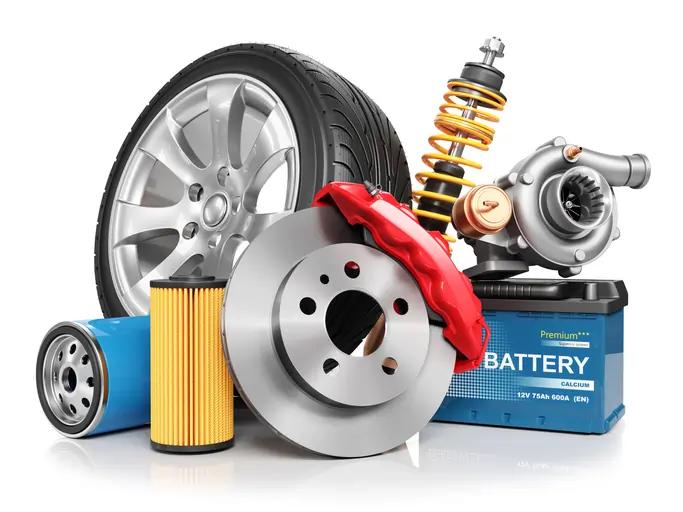Automotive Part Aftermarket Forecast to Reach US$ 1,048.6 Million by 2034 with 5.6% CAGR
Automotive Part Aftermarket Forecast to Reach US$ 1,048.6 Million by 2034 with 5.6% CAGR
Published by Wanda Rich
Posted on March 3, 2025

Published by Wanda Rich
Posted on March 3, 2025

Fact. MR's latest market report outlines growth opportunities and challenges in the automotive part aftermarket amidst connected vehicles, e-commerce expansion, and electric vehicle adoption.
ROCKVILLE, Md. – A recently released research report by Fact.MR, a provider of market research and competitive intelligence, indicates that the global Automotive Parts Aftermarket is set for significant growth. Projections show a rise from US$ 608.1 million in 2024 to an impressive US$ 1,048.6 million by 2034. This growth, with a compound annual growth rate (CAGR) of 5.6%, is detailed in a comprehensive report from Fact.MR, a leading market research firm.
The automotive parts aftermarket is experiencing a surge, driven by technological advancements and the increasing age of vehicles on the road. The integration of the Internet of Things (IoT) in vehicles has revolutionized the industry, enabling real-time monitoring and predictive maintenance. Connected vehicles generate vast amounts of data, allowing aftermarket companies to offer innovative services and solutions tailored to modern automotive needs.
As vehicles age, the demand for replacement parts and maintenance services escalates. Components such as brakes, tires, and batteries naturally wear out over time, necessitating regular upkeep. This trend underscores the importance of the aftermarket sector in ensuring vehicle longevity and safety.
For More Insights into the Market, Request a Sample of this Report: https://www.factmr.com/connectus/sample?flag=S&rep_id=9495
Key Takeaway from Automotive Parts Aftermarket Study:
“Market players should invest in IoT-enabled predictive maintenance, e-commerce expansion, and EV-compatible aftermarket solutions to capitalize on evolving consumer demands, fleet growth, and technological advancements while mitigating challenges posed by electric vehicle adoption,” says a Fact.MR analyst.
Growing Passenger Car Ownership and Aging Vehicles Driving Aftermarket Demand:
The increasing number of passenger cars, driven by population growth, urbanization, and rising disposable incomes, fuels demand for aftermarket parts as vehicles age and require maintenance. Consumers are keeping their cars longer, necessitating replacements for components like brakes, batteries, and exhaust systems. Many owners seek aftermarket parts for customization, including aesthetic enhancements and performance upgrades. Seasonal variations drive demand for replacement tires, with winter and summer tire changes becoming routine. Rising vehicle sales, stringent road safety regulations, and the high replacement frequency of tires further contribute to the steady growth of the aftermarket segment.
Key Market Players:
Competitive Landscape:
Key players in the automotive parts aftermarket industry are implementing various strategies to strengthen their market position. These include fostering innovation, maintaining strict quality control, forming strategic partnerships, optimizing supply chain management, and advancing their products and technologies. Companies like Hitachi Astemo Ltd. and Robert Bosch GmbH are leading the sector with their extensive portfolios. Hitachi Astemo specializes in advanced automotive systems, including powertrain solutions and electronic control units, enhancing vehicle efficiency. Bosch, a global technology leader, offers a comprehensive range of high-quality aftermarket parts, covering powertrain, safety, and electrical systems.
Get Customization on this Report for Specific Research Solutions: https://www.factmr.com/connectus/sample?flag=S&rep_id=9495
More Valuable Insights on Offer:
Fact.MR, in its new offering, presents an unbiased analysis of the automotive part aftermarket, presenting historical demand data and forecast statistics for the period (2024 to 2034).
The automotive part aftermarket is segmented based on vehicle type, product type, and region. By vehicle type, it includes passenger cars, light commercial vehicles, and heavy commercial vehicles. Product segmentation covers engine and transmission parts, brake parts, electrical parts, fuel intake and ignition parts, A/C parts, suspension parts, exhaust parts, engine cooling parts, steering parts, wheels, and tires. Regionally, the market is divided into North America, Europe, East Asia, Latin America, Middle East & Africa, and South Asia & Oceania, reflecting diverse market demands and growth potential across different geographies.
Check out More Related Studies Published by Fact.MR Research:
Automotive catalytic converter devices market is set to grow at an 8.6% CAGR from 2025 to 2035, reaching USD 151.1 billion by 2035.
Automotive knee airbags market is projected to grow at a steady 5.5% CAGR over the next decade, reaching US$ 320.1 million by 2033.
Automotive injector nozzles market is expected to grow at a 6.5% CAGR, reaching US$ 8.9 billion by 2027 from US$ 6.5 billion in 2022.
Automotive brake components market is forecast to expand at a CAGR of 4.2% to reach a valuation US$ 75.6 billion by 2032.
Automotive electronics market, valued at US$ 261.8 billion in 2023, is projected to reach US$ 580.5 billion by 2033, growing at an 8.2% CAGR.
Automotive wiper market is thus expected to increase from US$ 4.50 billion in 2023 to US$ 6.99 billion by the end of 2033.
Automotive lead-acid battery market was valued at US$ 26.93 billion in 2022 and is projected to grow at a 5.1% CAGR, reaching US$ 46.54 billion by 2033.
Explore more articles in the Research Reports category











